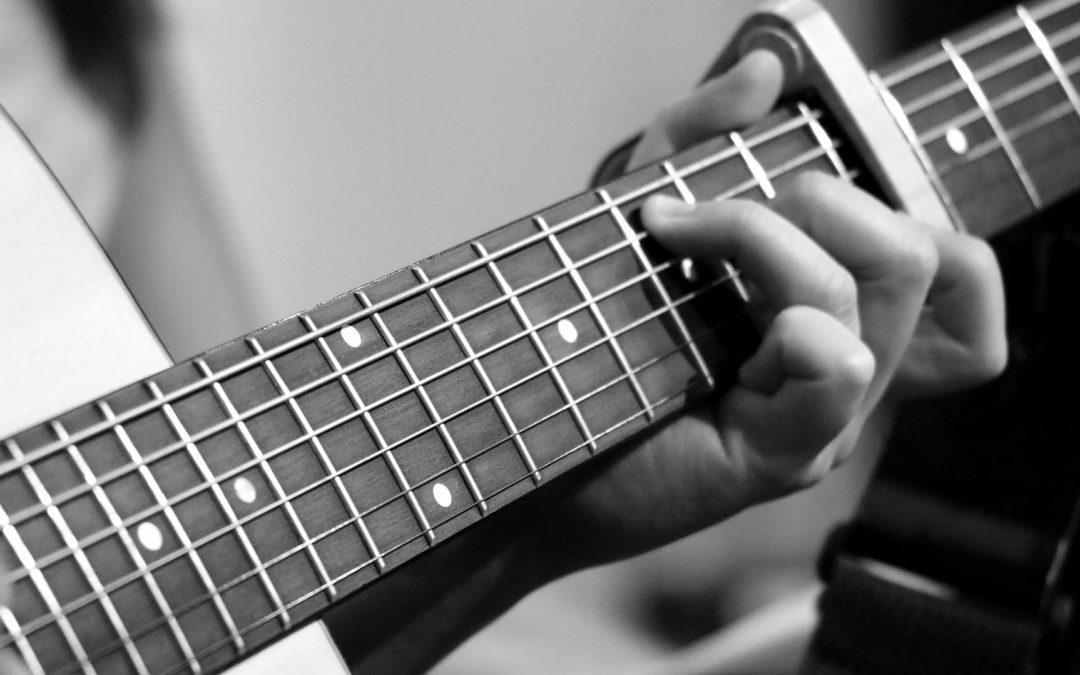In this week’s post I’m collating my top 5 phrases I say to students generally anywhere from beginner to early intermediate. Why? Well in lessons I’m frequently saying these as they are vital to fundamental technique, and so for practice at home it’s great to be reminding yourself of these to ensure that you’re developing good technique - particularly for those in the aforementioned beginner to early intermediate range.
1. Closer to the frets
In whatever we are playing, whether it is chords, or lead lines, we want to be as close to the fret as possible without actually being on top of it - touching it is good however. So for example if I’m playing the 2nd fret, my finger should be right up against the 2nd fret, on the side closest to the nut or head of the guitar. In my opinion this is the biggest cause for buzzing once anyone gets over pressure. It is also more often not even a case of needing to stretch out your fingers more, but just moving the shapes closer to the frets, even 1mm can make a big difference here.
To understand why, the sound/pitch is coming from the vibrations on the string between that fret and the bridge, so playing half way between the frets is just causing you to apply more pressure than you would need to if you were right up against it.
2. Keep moving in constant motion
This relates to strumming. I like to avoid “strumming patterns” and teach people to capture the feel of the rhythm, however many students need that bridge first. But what we always want our hand to do is move constantly in semiquavers or quavers (16th or 8th notes), just hitting the strings when you need to, avoiding them all other times. This will cover about 99% of any rhythm you will need to strum. Whenever I have students mess up the rhythm they are strumming, it is most likely (by a long shot) that their hand was stopping and starting with the sound of the rhythm rather than moving constantly in time with the song.
3. Slow down
There is something about the human condition that makes us want to go faster, especially when we are trying to learn or achieve something. However, this really is counter productive to learning. When we speed up too soon we often make mistakes - creating bad muscle, aural and visual memory. We also lose smoothness and feel of what we are playing. This either means we never really learn it to 100% of our capability, or it just takes a lot longer.
Speeding up a song, lick, riff, scale, chord change etc. is actually the easy part. So slow down, learn it well, play it smoothly, then incrementally increase the speed - you will save tons of time.
4. Thumb closer to centre of hand
This one I have only discovered more recently in trying to get students to keep their fingers closer to the frets at all times (which would be my number 6 but it takes a lot more time and discipline to implement - but you should also do this). Keeping the thumb primarily between the second and third finger allows your fingers to stretch out much more than if your thumb was behind the first finger - try it for yourself. It also puts all of your fingers on equal footing. So I always tell people this, then they are in a much better position to keep their fingers closer to the frets at all times.
5. Hold the pick closer to the tip
This one is much more prevalent with kids, though still applies to many adults. With most instruments (not all), our fingers have direct access to the instrument. However, with the guitar, unless we are playing fingerstyle, we use a pick, creating space and detachment between the instrument and our fingers. While you become accustomed to this, it inevitably makes it more difficult, particularly with accuracy. So the further back you hold the pick, the more disconnected you are with the instrument itself. Ideally you want the edge of your thumb and fingers to be just a couple of millimetres away from the tip/edge of the pick. This also helps you control the sound of your picking and strumming.
